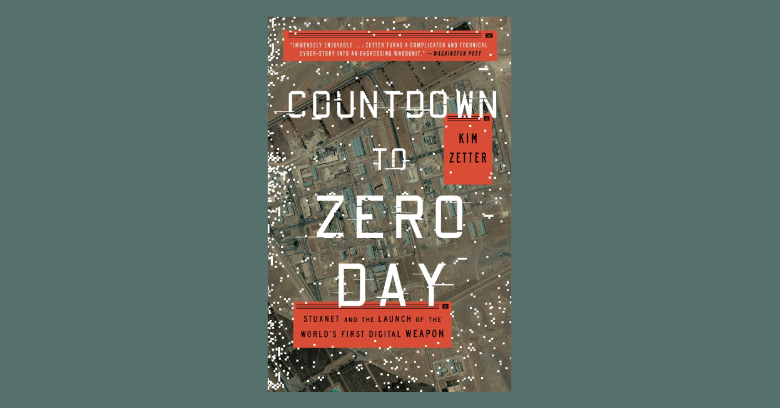Counting Down to Zero Day by Kim Zetter
From Code to Conflict: Reflections on Counting Down to Zero Day and the Dawn of Cyber Warfare.
In a world where wars were once fought with bullets, bombs, and boots on the ground, Counting Down to Zero Day by Kim Zetter is a chilling reminder that the battlefield has irrevocably shifted. Zetter’s investigative masterpiece doesn’t just chronicle the emergence of the Stuxnet worm, it tells the origin story of cyber warfare itself. And the implications echo far beyond code.
Reading this book in 2025, especially in the aftermath of renewed military strikes and nuclear tension with Iran, feels almost prophetic.
Stuxnet: The First Cyber Weapon
Zetter meticulously unpacks how Stuxnet, a sophisticated piece of malware allegedly developed by the U.S. and Israel, was designed to infiltrate Iran’s Natanz nuclear facility and silently sabotage its uranium enrichment centrifuges. This wasn’t just code. It was a digital precision-guided munition, engineered to trigger real-world destruction without firing a single bullet.
This marked a paradigm shift: cyberspace, once a domain of espionage and data theft, became weaponized.
As a cybersecurity professional or even a curious civilian, reading how industrial control systems (ICS), programmable logic controllers (PLCs), and zero-day vulnerabilities were turned against a sovereign nation’s critical infrastructure is as fascinating as it is terrifying. Zetter’s narrative reveals just how deep the rabbit hole goes, from Siemens equipment in Iran to anonymous malware samples uploaded to VirusTotal, to the hidden nation-state fingerprints behind the attack.
Stuxnet didn’t just delay Iran’s nuclear program. It opened Pandora’s box. It proved that you could cripple a country’s strategic capabilities without ever crossing its borders.
Military Strategy in the Age of Code
From a military operations perspective, Counting Down to Zero Day illustrates a new doctrine, one that blends signals intelligence (SIGINT), cyber-physical systems, and covert operations. The operation, reportedly part of “Operation Olympic Games,” was more than a test run. It was a live-fire cyber op during peacetime.
What followed in the years after, retaliatory cyberattacks from Iranian hackers, targeting U.S. banks, infrastructure, and even water treatment plants, was the beginning of the tit-for-tat digital Cold War we now live in.
From Natanz to 2025: Nuclear Tensions Escalate Again
Fast forward to 2025. The world is watching the fallout of yet another flashpoint in U.S.-Iran relations. After years of diplomatic back-and-forth, sabotage campaigns, and proxy conflicts, President Trump authorized an airstrike targeting Iranian nuclear facilities, reigniting fears of a full-scale conflict in the Middle East.
While that decision made headlines, it’s important to remember: the fuse was lit years ago. Stuxnet may have delayed Iran’s nuclear ambitions, but it also escalated the stakes, pushed cyber warfare into the open, and taught the world how to fight dirty in the digital domain.
Kim Zetter’s book feels less like a retrospective and more like a primer for understanding the conflicts of today.
As a cybersecurity professional or someone concerned about digital peace, Counting Down to Zero Day leaves you with the questions:
- Who gets to decide when a cyberattack constitutes an act of war?
- What happens when less-resourced but highly motivated actors replicate what only nations could once do?
- How do we defend critical infrastructure when the threat is invisible, persistent, and evolving?
Zetter’s work is investigative journalism at its finest. It reads like a thriller, but the implications are very real. As nation-states continue to stockpile vulnerabilities like weapons, and as AI begins playing a bigger role in targeting and defense, this book offers a sobering glimpse into how modern warfare began, not with a bang, but with a worm.
